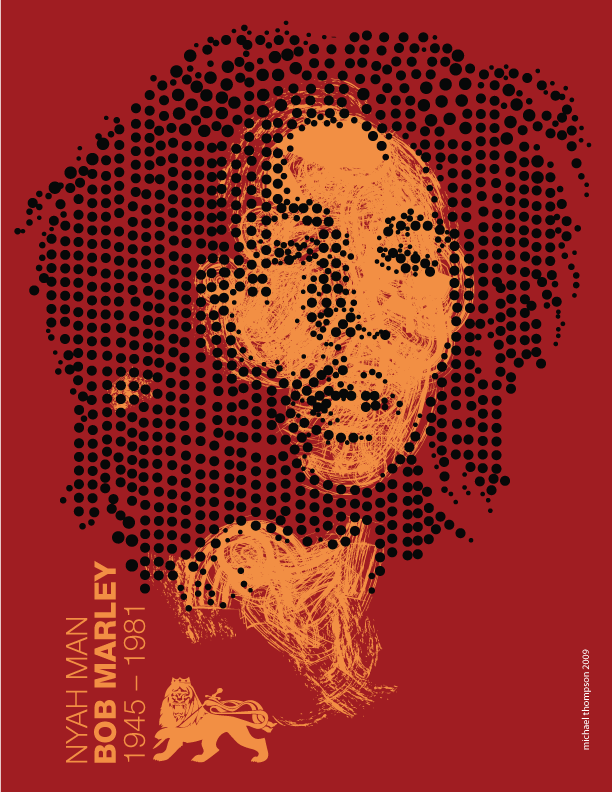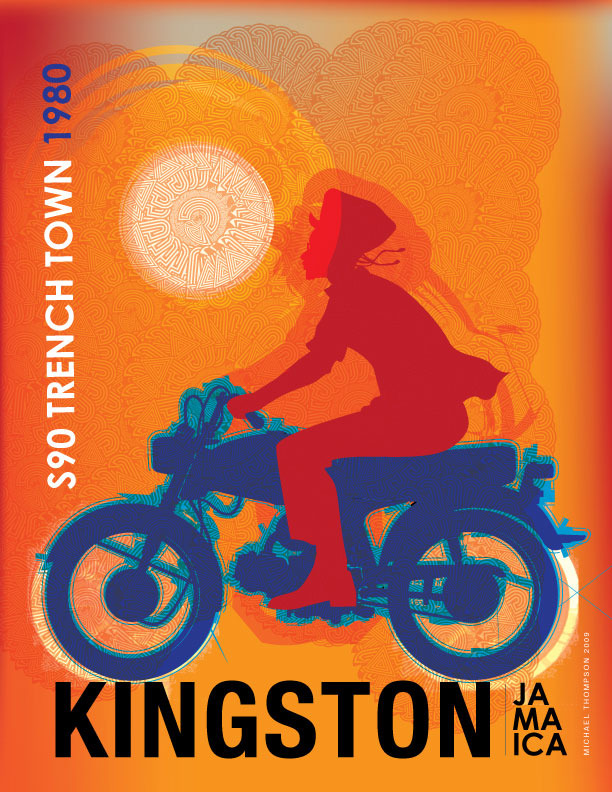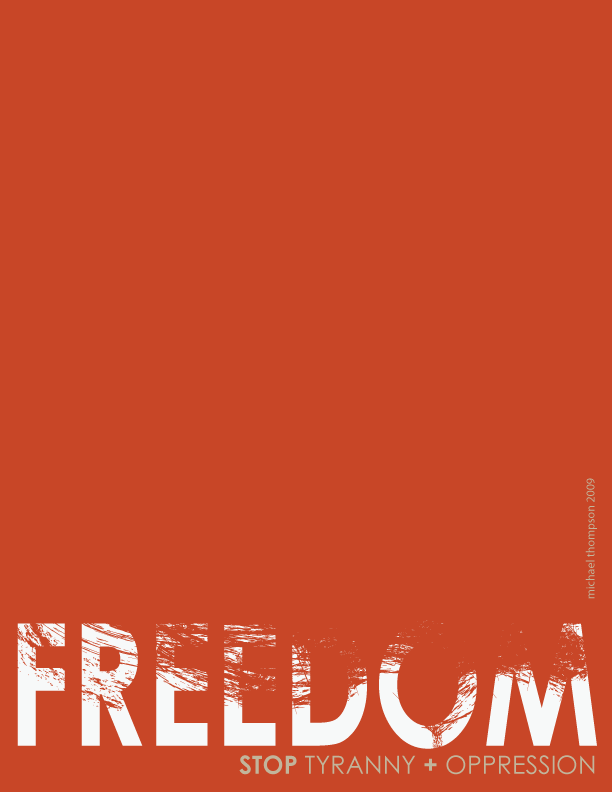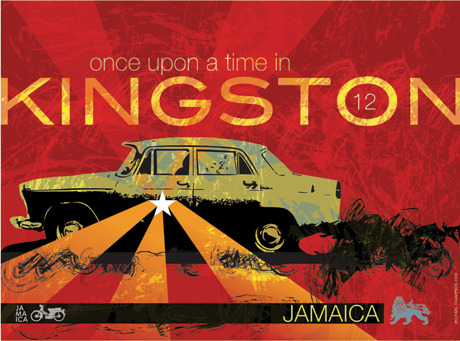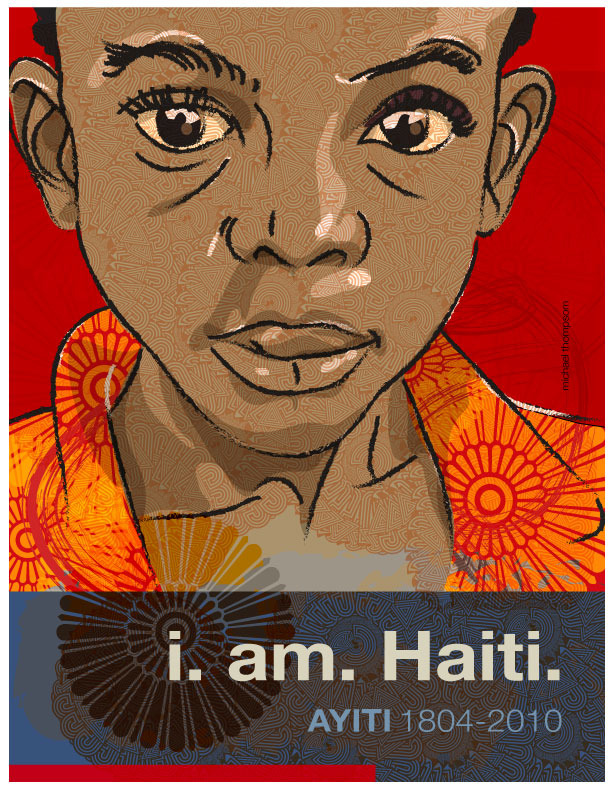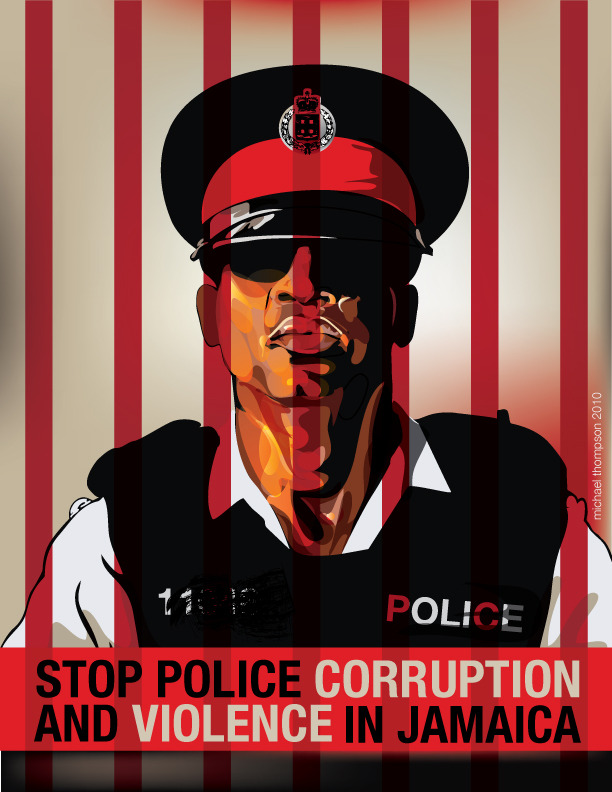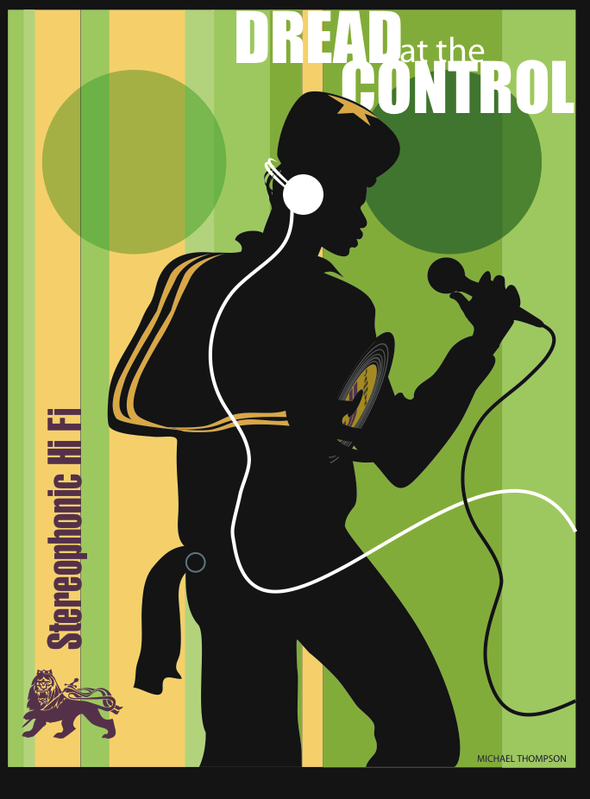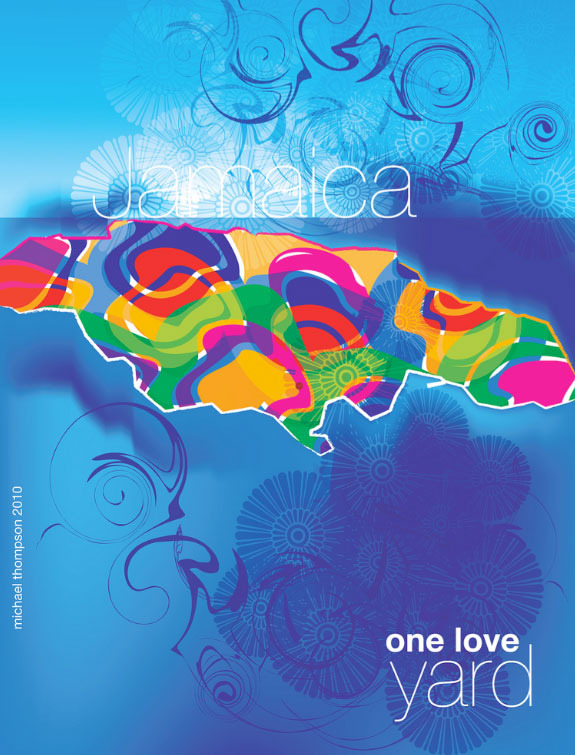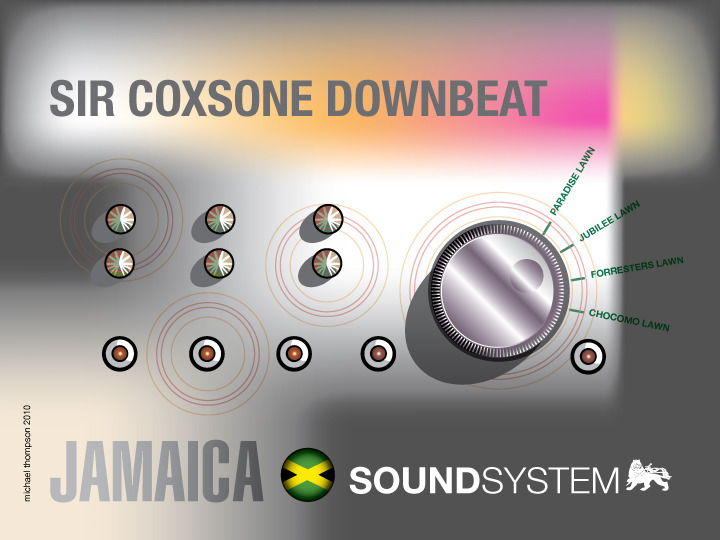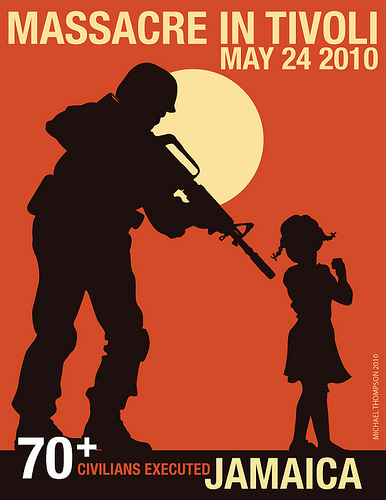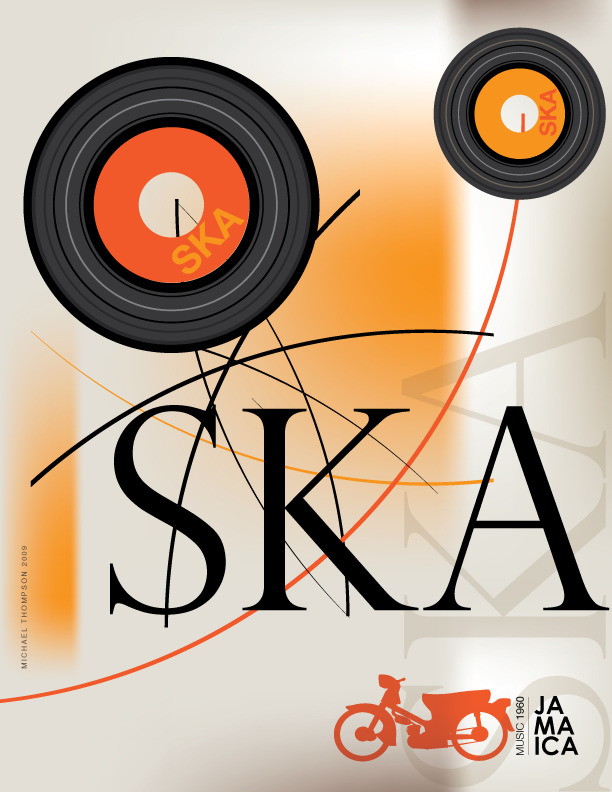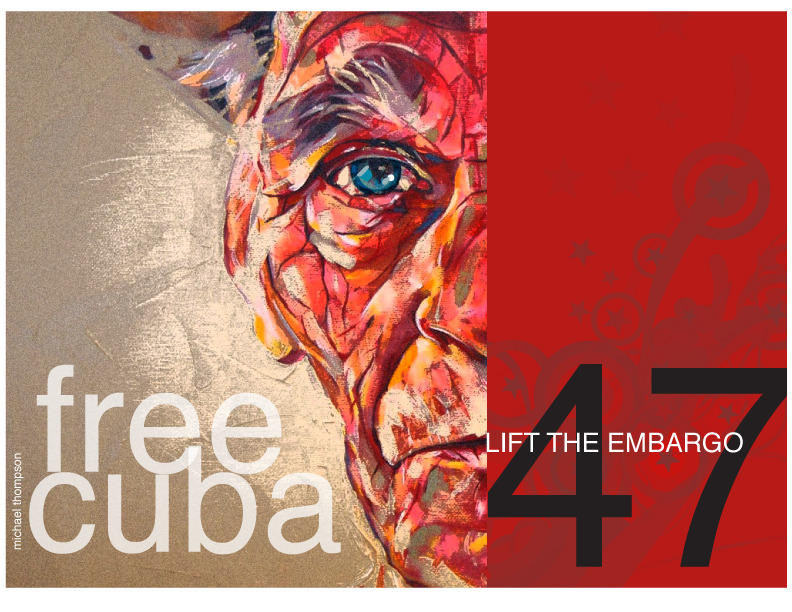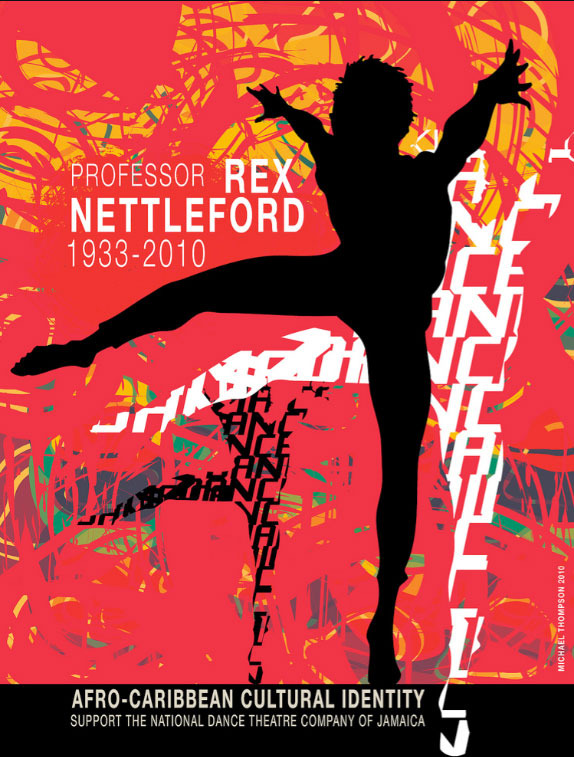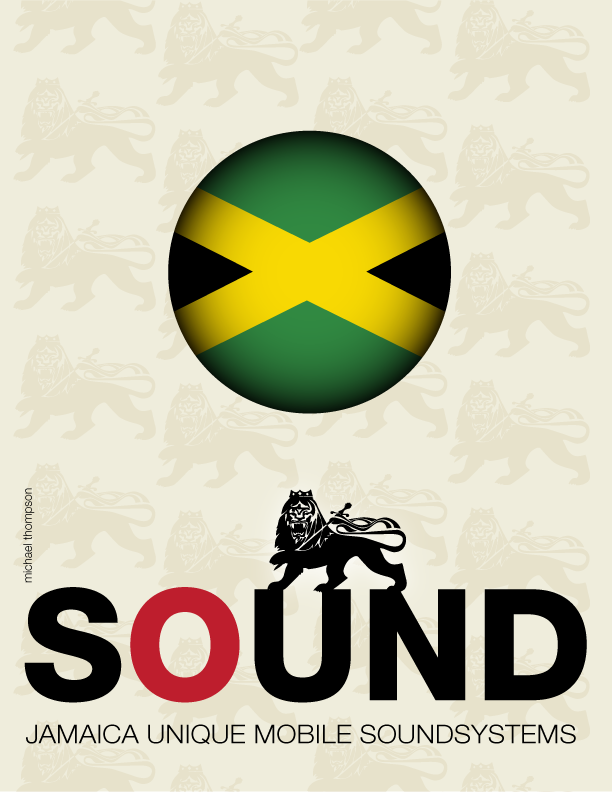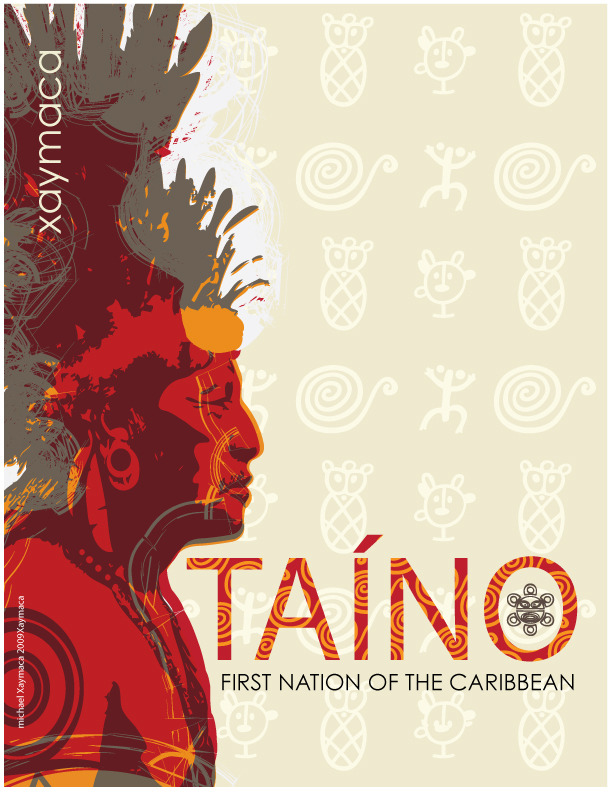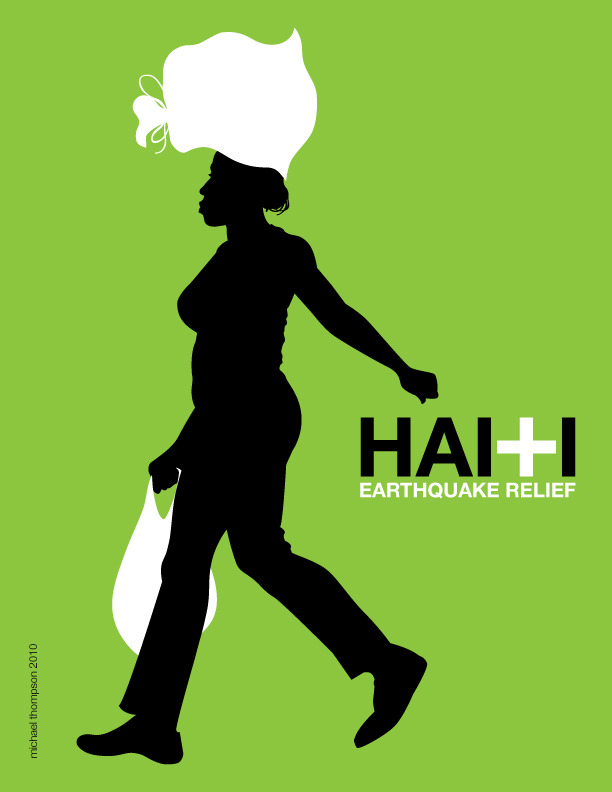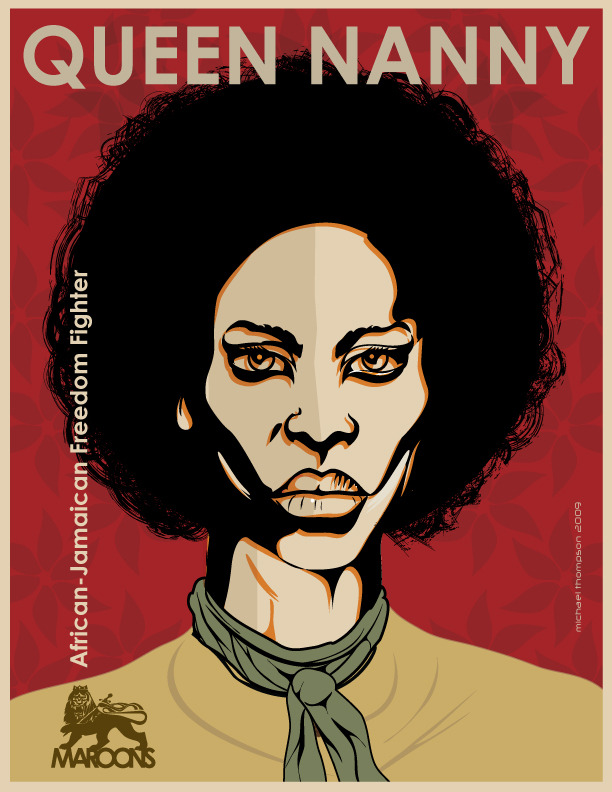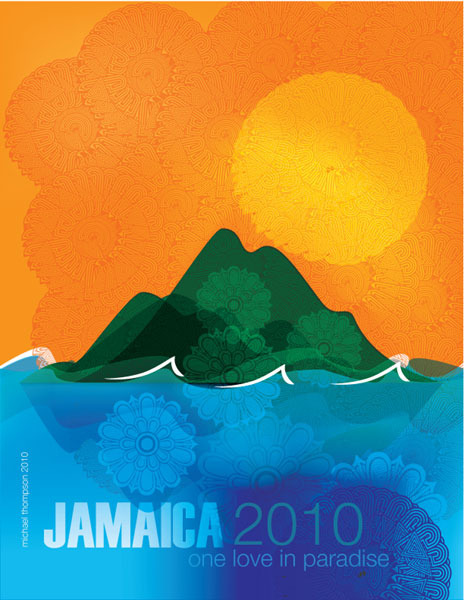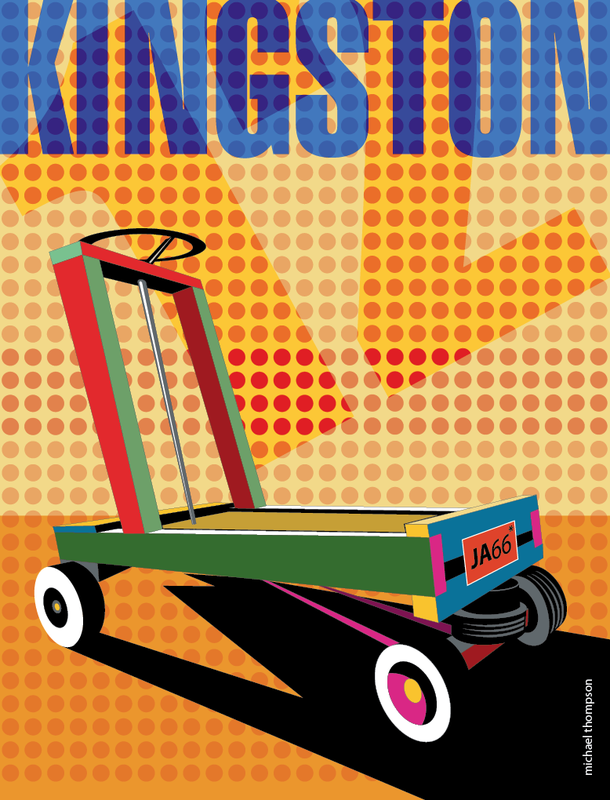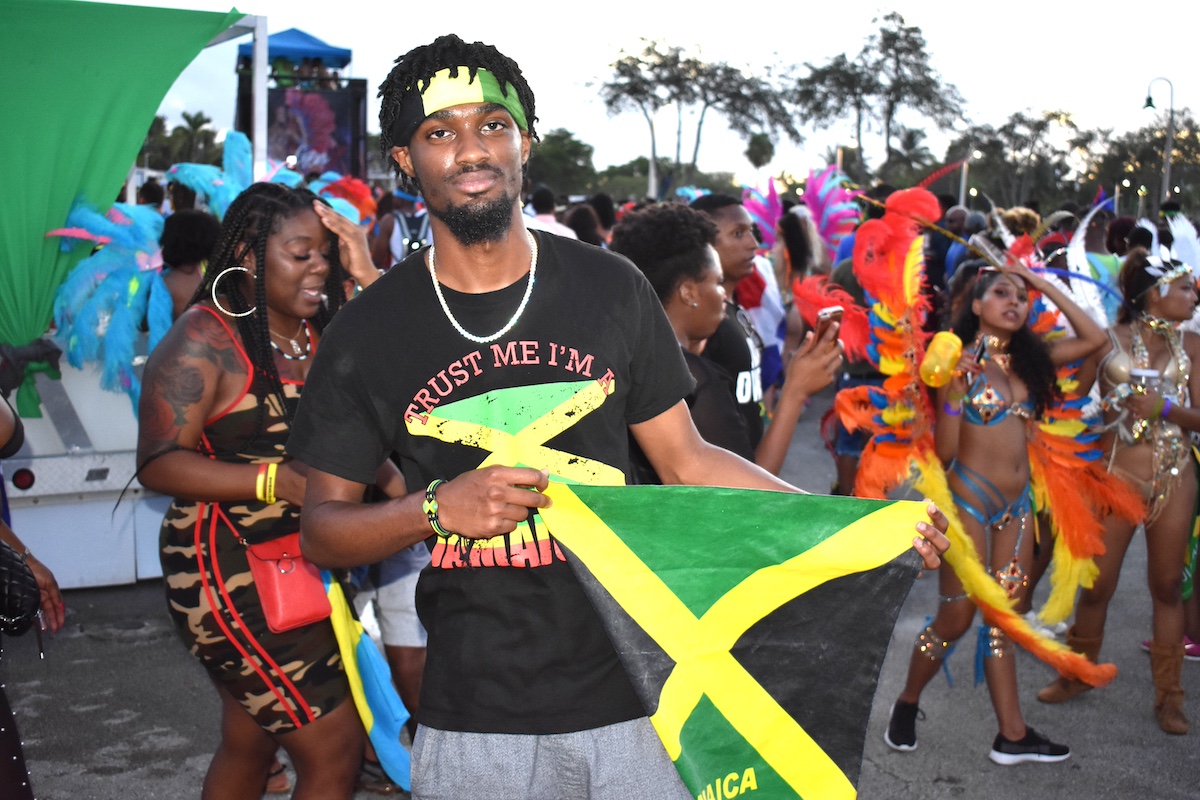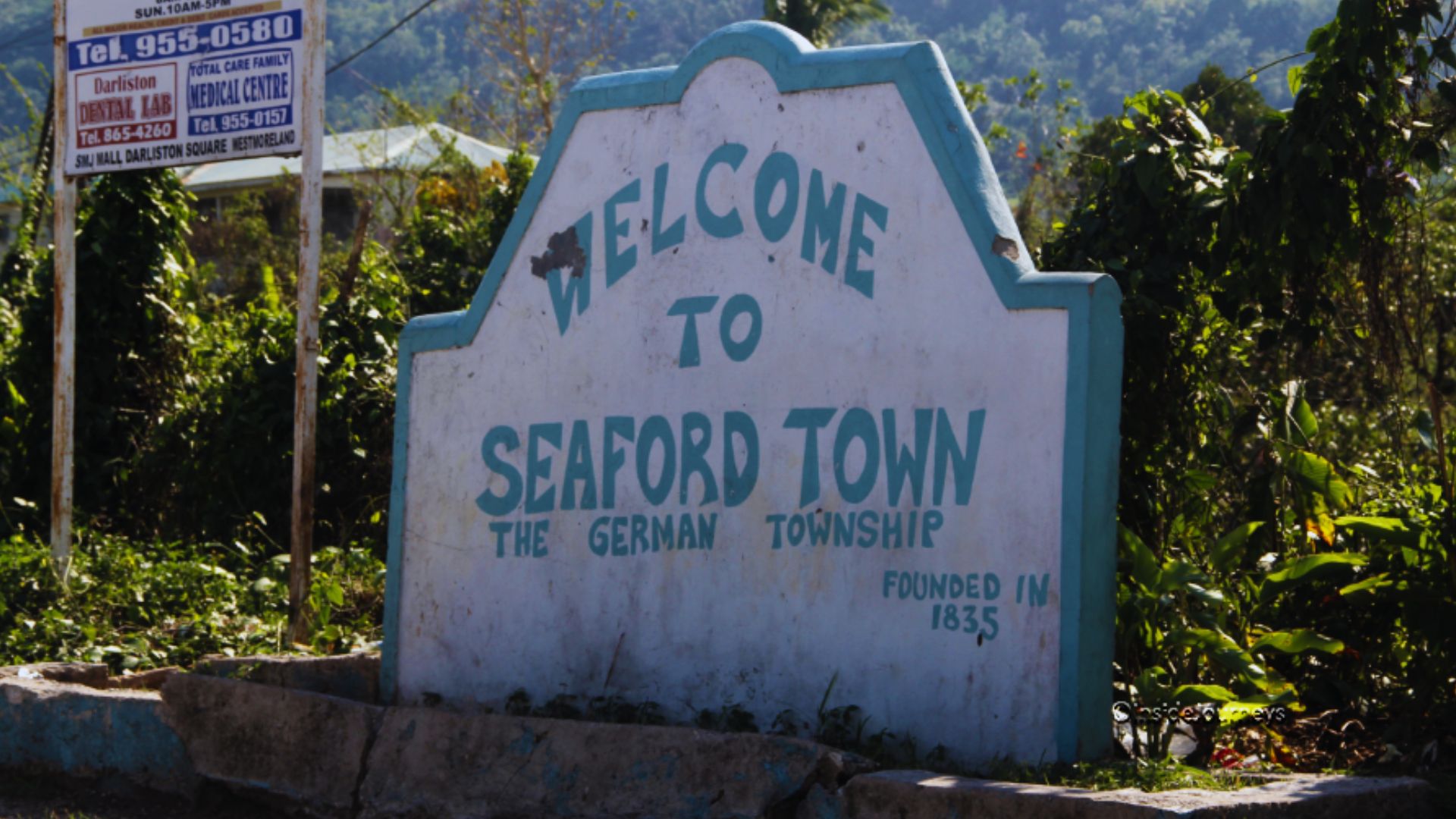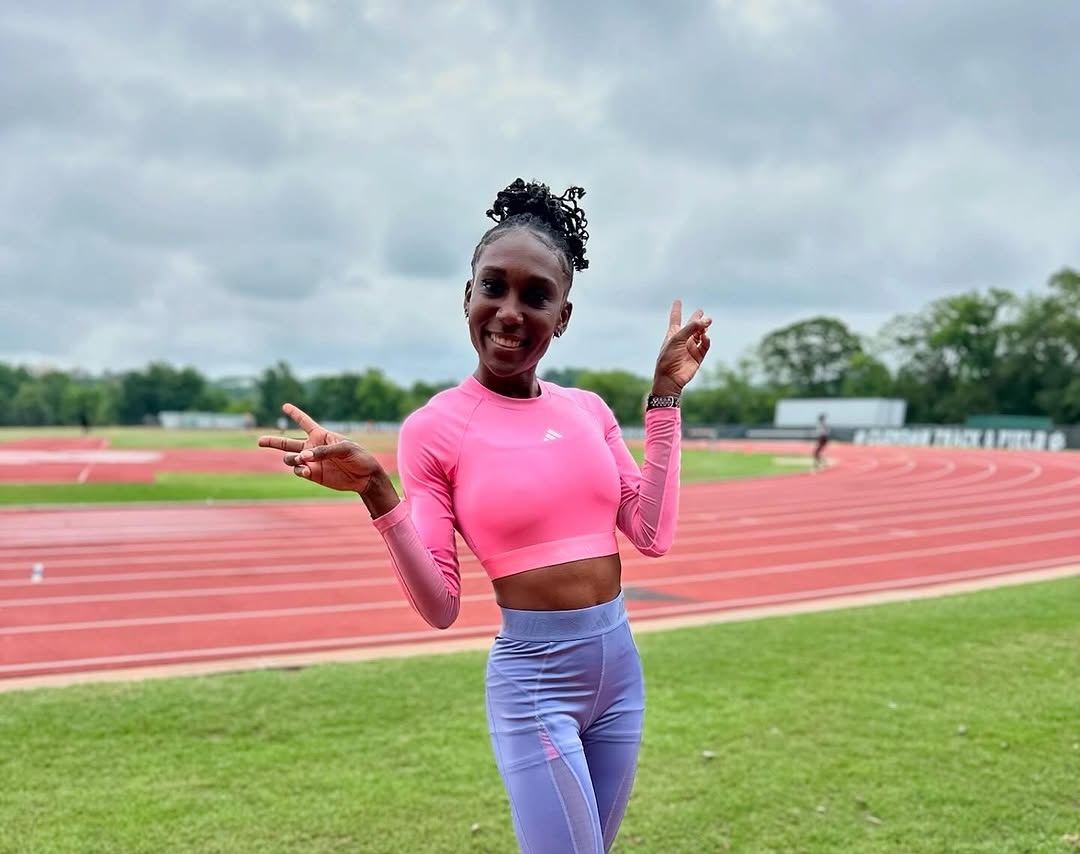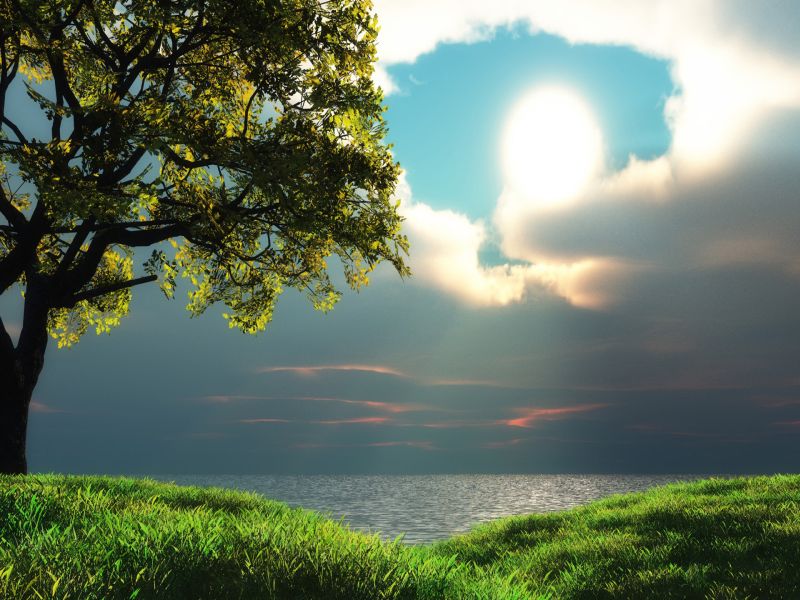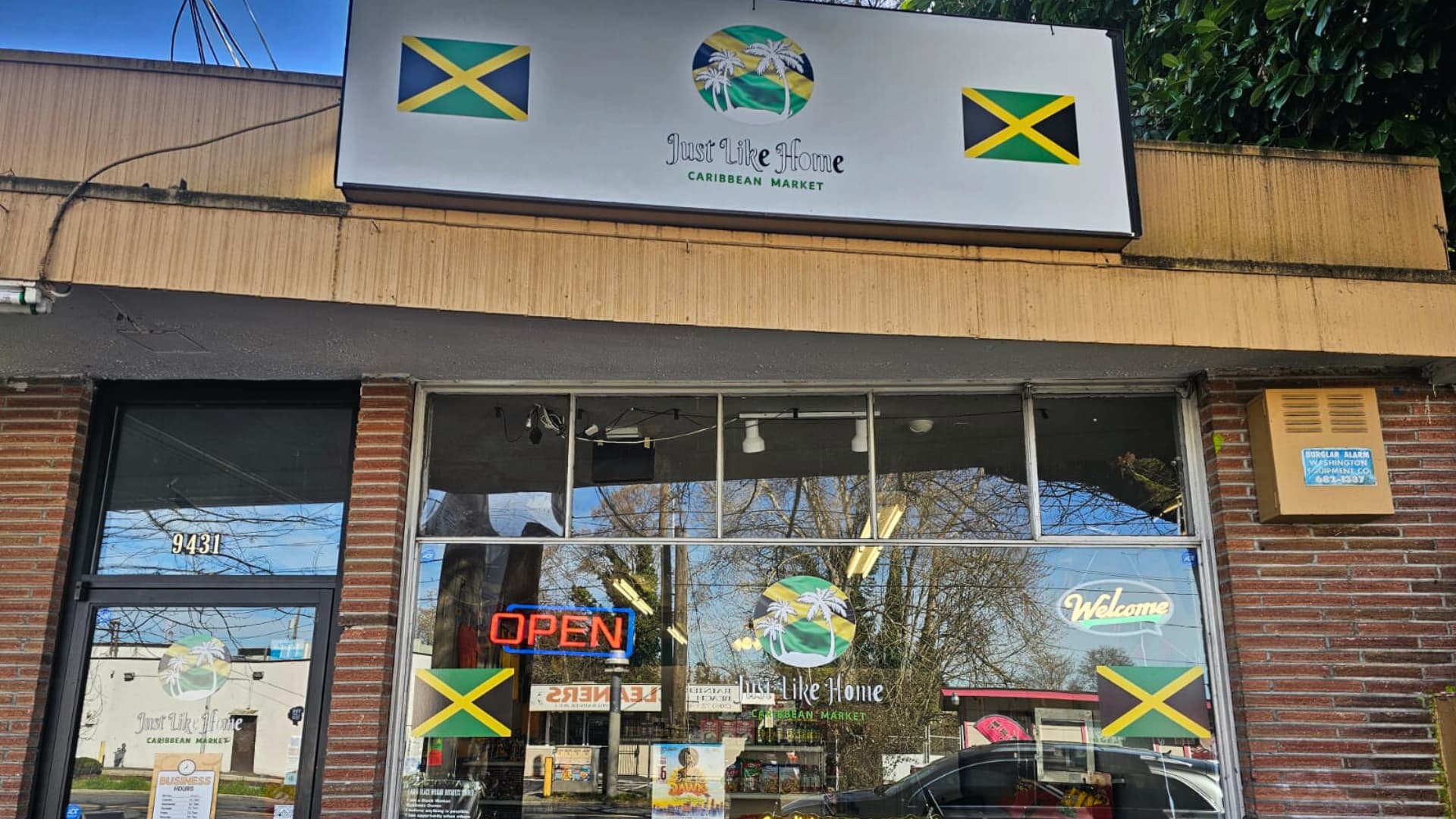This week we interview Jamaican artist and photographer, Michael “Freestylee Thompson. His work is widely acclaimed online and his flickr site is buzzing with accolades. He wants his art to bring awareness to the many social issues affecting a large section of our planet. He hopes to use his creativity for positive change and peace activism. He uses beautiful photographs, art and posters to express these realities loudly. His latest piece on Tivoli reflects activism in his work on current issues. See the gallery at the end of this interview .
Q. How did you get started as a graphic designer?
I studied Graphic Design at the Jamaica School of Art which I attended after graduating Calabar High School. After graduating art school I landed a couple of jobs at local advertising agencies in Kingston, Jamaica. One of those agencies was Paisley Kelly Kenyon & Eckhart Advertising. I was a designer at the time working on major advertising campaigns. Years later, I joined a public relation firm, Mike Jarrett Communications, as an Art Director. This is the last place I worked before migrating to the United States in 1990.
Q: What part of Jamaica are you from? Where do you currently live?
I was born in Kingston. I spent most of my early youth in the inner-city community of Jones Town, a stone throw from Trench Town, and the famed Ambassador Theater. Jones Town at the time was a thriving working class community. I also lived in Rollington Town in East Kingston and Havendale, St. Andrew. I currently reside 65 miles west of New York City just outside the city of Easton, Pennsylvania. It is a quiet semi rural area which is a far cry from the bustle of New York City and Kingston. But, a great place to be creative in this tranquil surroundings.
Q: How was the adjustment for you coming from Jamaica to the United States?
Like any form of relocation from one place to another it is always difficult to begin with. You know how this goes, you are starting your life all over again. But gradually you find your place and assimilate to the new environment. We Jamaicans have been doing this from as early as the 1920 so I am just following in the foot steps of people like Marcus Garvey who came before and did great things. I am walking the same path many have trod in the past and continue to do today. I must say Brooklyn, New York was a good starting point into my American Journey. The strong Jamaican and Caribbean community who call this borough their home helped in my adjustment.
Q: How do you deal with the cold climate? Do you find that you work more and think of Jamaica more?
Humans have an amazing way of adapting to new environments. Coming from Jamaica with a one season climate takes some adjustments to feel comfortable with the cold climate. However, I have come to like the changes of the seasons and the beauty that comes with it, after twenty years you sure get use to it. I have learned to live with the cold climate although sometimes it becomes a love hate relationship. Ironically, many Americans also have a love hate kind of feeling for winter. Can’t wait for it to come and can’t wait for it to end. It is not the winters that draws me back to Jamaica. I think once you leave Jamaica you tend to appreciate that little rock in the Caribbean sea, and the bond you have with it grows more with time. You also begin to desire the little things most Jamaicans back home take for granted. Like drinking fresh coconut water or having mangos fresh off the tree, and missing open air street dances. You then think of the history and culture a lot more than if you were back home. The seasons do not determine my creative energies. I am always creating new designs be it on the computer or painting. Any time I can find between my freelance projects. It depends on what is happening and the urgency of getting the message out.
Q: How long have you lived in the United States?
I have been living in the United States for over 20 years, but seems like only yesterday I left yard.
Q: Tell us about your work?
My graphic designs, and in particular my posters like the ones on Flickr draws their influences in terms of style from the retro Cuban Revolutionary Poster of the 1960s. The “golden age” as that period is called. The aesthetics and communication are based on the principle that “simple is best” and the message is king. The designs can be placed in the category of modern iconic art with strong political or social messages. These types of activist or socially conscious art are now becoming main stream; made popular by artists like Bansky and Shepherd Fairey whom I admire greatly. My designs are quite varied, depending on the poster type and whether it is political or cultural, regional or international. I tend to lend a voice to issues which I feel passionate about, such as injustice against indigenous people, environmental exploitation and poverty. However, I also touch on Jamaica’s rich historical and cultural past. Jamaica’s musical experience is a treasure I just cannot ignore; Ska, Rocksteady and Reggae. My style is also deeply rooted in Jamaican popular symbols mostly from the iconic years of the 1970s. I take those images from Jamaica’s urban visuals and turn them into cool posters of our time. Images include hand carts, skates, Honda 50s, s-90 (Honda motorcycle), Rastafarian lion of Judah etc; turning them into hip international visual icons, anything that is retro Jamaican was fair game. I try to keep the designs crisp with a minimalist feel yet visually powerful. I always retain a fresh and direct approach to my designs. I illustrate all the elements and just roll with it in a freestyle way. The political side of my art plays a big role in my design collection. They speak on the burning international issues and conflicts. The Israeli attack on Gaza and the wider Israeli Palestinian conflict, the US embargo on Cuba, Healthcare, Police brutality, Exploitation in the Amazon, Freedom, Anti War and Peace, Tibet, and Globalization. I guess I am an internationalist at heart and so is my art.
Q: How did you get into designing posters?
I design for a number of clients in the New York Area and across the US and this is one of the reason I decided to create a Poster that stepped outside of the commercial arena. I explain on my Flickr profile that I want to make a difference with art and to bring awareness to the many social issues affecting large sections of our planet. I use my creativity for positive change and peace activism. Art should speak loudly and make an impact for those who pause for a moment to look and think. Art should not only make pretty statements, but also make an impact on the lives of those who struggle or those who are oppressed. Posters like the ones I create chronicle the economic and social divide that threaten the global community. I use this medium to express these realities. My first protest poster was about an incident in Jamaica called the Green Bay Massacre. An incident that took place January 5, 1978, in which a number of youths from South Side ghetto in Kingston were lured to Green Bay military firing range in Hellshire, St Catherine and executed by JDF (Jamaica Defense Force) Soldiers. This incident was shocking when the truth came out and I had to use my art to stand up for justice and to openly reject the brutal injustice by the Jamaican State. It is still a stain on Jamaica’s political past. My current designs are ignited by another massacre, when Israel launched its war on The Gaza Strip during the winter of 2008–2009. I watched on television as the helpless Palestinian civilians suffered at the hands of Israel and the world stood by and watch. So here again I began to make posters and posting on Flickr. They became very popular, drawing hundreds of viewers globally along with numerous requests for these posters.
Q: Do you do posters for Reggae shows, parties and Jamaican events?
No, I have not used my posters in a commercial way, or offer my services for shows, parties or events. Most of my posters were created as limited edition art pieces. However, some of my posters have been used in campaigns such as the Gaza Freedom March held last January in Egypt and Gaza. Yes, If the project is right I would love to create for a Reggae concert.
Q: Many of your posters are of a Nostalgic time in Jamaica. Is there a reason you focus on that era and time?
This is an important question, because this nostalgic time (1960-1980s) is Jamaica’s most important cultural renaissance. I want to capture and celebrate this time as it is fast disappearing in Jamaica’s cultural identity. Others outside of Jamaica continue to keep this very important period alive, and I am doing my part too. We cannot discard the roots of our cultural identity away like trash. It is from this time that Jamaica can draw a significant amount of creative energy. It was a very creative time for Jamaica and I think it is our “Golden period”. This looks like another tag line for a poster. Our greatest Jamaican superstar Bob Marley did some of his finest works in that period. So I look to this time for creative sustenance. Remove that time frame (60s-80s) and Jamaica today would be a very dull place.
Q: You do not look that old. Were you around during that time? How do you get the inspiration to paint about this time?
I am not as young as you may think, I was a teen during the late 1970s so I can say I experienced the popular culture during that period especially the latter part of the 70s and early eighties. I would say I had a glimpse of some of the popular culture, music and style of the era; like the S90 motorcycle, Desert Clarks and Wallabee boots, Arrow shirts, pants length, knits, roots music and sound systems. Rastafari was a huge influence then, I like most youth of that time, was very much captivated by this movement which played an important role in shaping how we saw the big picture not just in Jamaica but the world. It was a time of heightened political consciousness for many Jamaican youth such as myself. We were aware of Apartheid in South Africa and the struggles that were taking place there. I also visited Cuba twice. In 1978, I was part of the Jamaican delegation to the World Festival of Youth and Student which was a massive event with youths from around the world, and a second visit in 1985. These visits opened my eyes about Cuba and what life was like on the Island. My experience was a far cry from the imprisoned people we were brainwashed to believe. My interest in this medium began to grow when I created my first international poster for this event as part of the arts delegation. The colorful silkscreen posters I saw in Cuba at the time, created by the ICAIC (Cuban Institute of Cinematic Art and Industry) and its sister offshoot OSPAAAL (Organization in Solidarity with the People of Africa, Asia, and Latin America) made a tremendous impact on my work. If you are familiar with Cuban posters you can see the influence in my art today. It was an exciting and important time for me.
Q: Do you listen to the music from that era?
Definitely, my music collection includes many Ska, Rocksteady, and Roots Reggae music “chunes” form the 1960s through the late 1980s. I consider this period the most productive and creative era for Jamaican music. Some of Jamaica’s most influential artists came out of that period; Toots, Derrick Morgan, Bob Marley, Big Youth, Horace Andy, Ken Booth, Dennis Brown, Heptones, Dillinger, Lee Scratch Perry, Ranking Trevor just to name a few. Lets not forget the big sound systems that filled the dancehalls all across Jamaica and nurtured the artiste in their stables. So Yes, music from this time plays an important role in my creative inspiration. We also should not forget that it was this era that spawned the love for Reggae music world wide especially in the UK and Europe in general. So I have to give big props to the artistes, sound systems and producers from that time. Outside of Jamaica there is still huge interest in the Jamaica music from the 60s-70s.
Q: Has any musical artist from that era asked you to do album work for them?
No. I was never asked to design for an artist from that time. It would be a huge honor if that occurred.
Q: Which is your favorite poster?
That is a difficult question, like your kids you have to love them all.
Q; Do you have any gallery exhibits planned for this year?
I had an Exhibition in Bethlehem, Pennsylvania earlier this year with other artists and Zine publishers. However, I do not have any traditional gallery showing planned at the moment. I am always looking for new and creative opportunities to present my work. My posters have been published in publications in the Middle East and Europe. Many people have seen my works on the streets of London during the WTO demonstration and also here in the United States and Canada. I consider it more an underground movement. My painting of Obama was published in Time Magazine’s year end issue (2008) and that was a big coup. My posters are viewed by thousands of people from around the world on Flickr. I have had over 25 thousand visitors to my Flickr site, that is a big number to beat. You cannot get that kind of traffic in a traditional gallery setting. I have a number of collaborations in the making. One is a collaborative effort by the global creative community in support of Haiti. The Haiti Poster Project is an effort to raise money for Doctors Without Borders who need the money to support it’s Haiti effort. I would love to have a showing in Jamaica and I am making some effort to do that in the future. I was invited to collaborate with Mahalstyle.com which is an interactive community that addresses the topics of hair, makeup, and fashion; some very creative people out there in San Diego, California and I, are looking forward to this creative collaboration. You can also find my political posters in the online archives of The Palestine Poster Project.
Q: What has been the high point of your career so far?
There are a number of high points in my career. Getting my work published in the Time magazine’s December 2008-January 2009 issue, article “Barack Obama the 2008 Time Person of the Year”, would be at the top of the list. Having my posters prominently supporting the People of Palestine in the Gaza Strip is another high point. My “I am Gaza” poster design was used in The Gaza Freedom March held in Egypt last January in solidarity with their struggle to end the occupation. I had my posters published in the magazine of the International Academy of Art Palestine and that was also an important one for me. Traveling and designing on a number of corporate projects in Vienna and Budapest, a couple years ago, was also an important milestone in my career.
Q: What are the tools you use to create your posters?
I design on an iMac creating all my posters primarily in Adobe Illustrator. I must say Adobe Illustrator program is an amazing creative tool.
Q: Who are you playing on your ipod right now?
My eclectic playlist run the international musical gauntlet. But right now I am spinning Sizzla, Queen Ifrica, Alborosie, Barry Brown, Big Youth, Lady Gaga, Santogold, Wyclef Jean, Gnarls Barkley, DJ Kentaro and Sade.
Q: If you had one wish to “posterize” a musical artist who would it be?
Definitely Peter Tosh; a musical giant who should be celebrated.
Q: Thanks for the interview, any closing thoughts?
Thank you. I appreciate the opportunity to have my story and work published in the Jamaican community. It is an honor. Respect!
